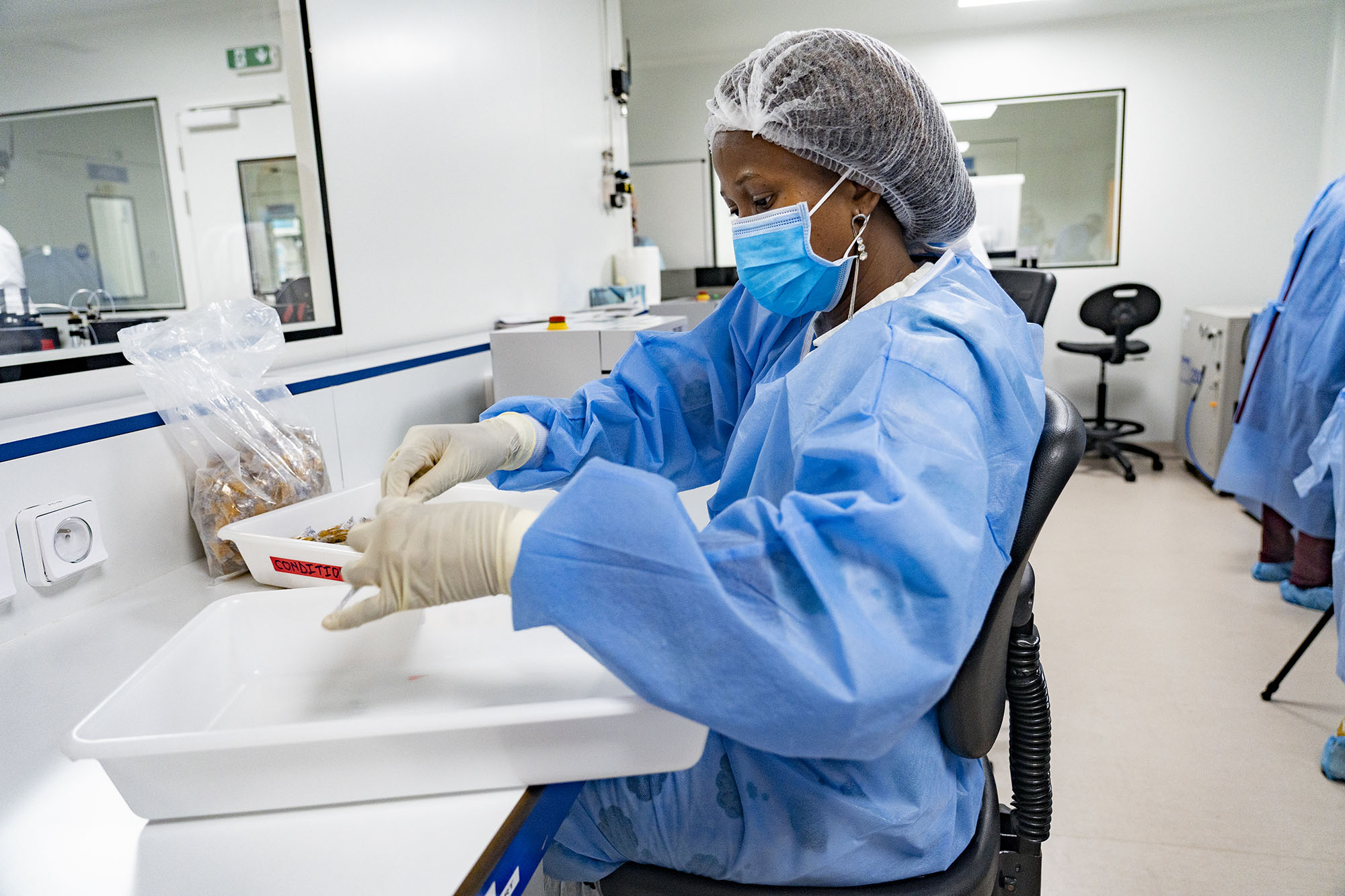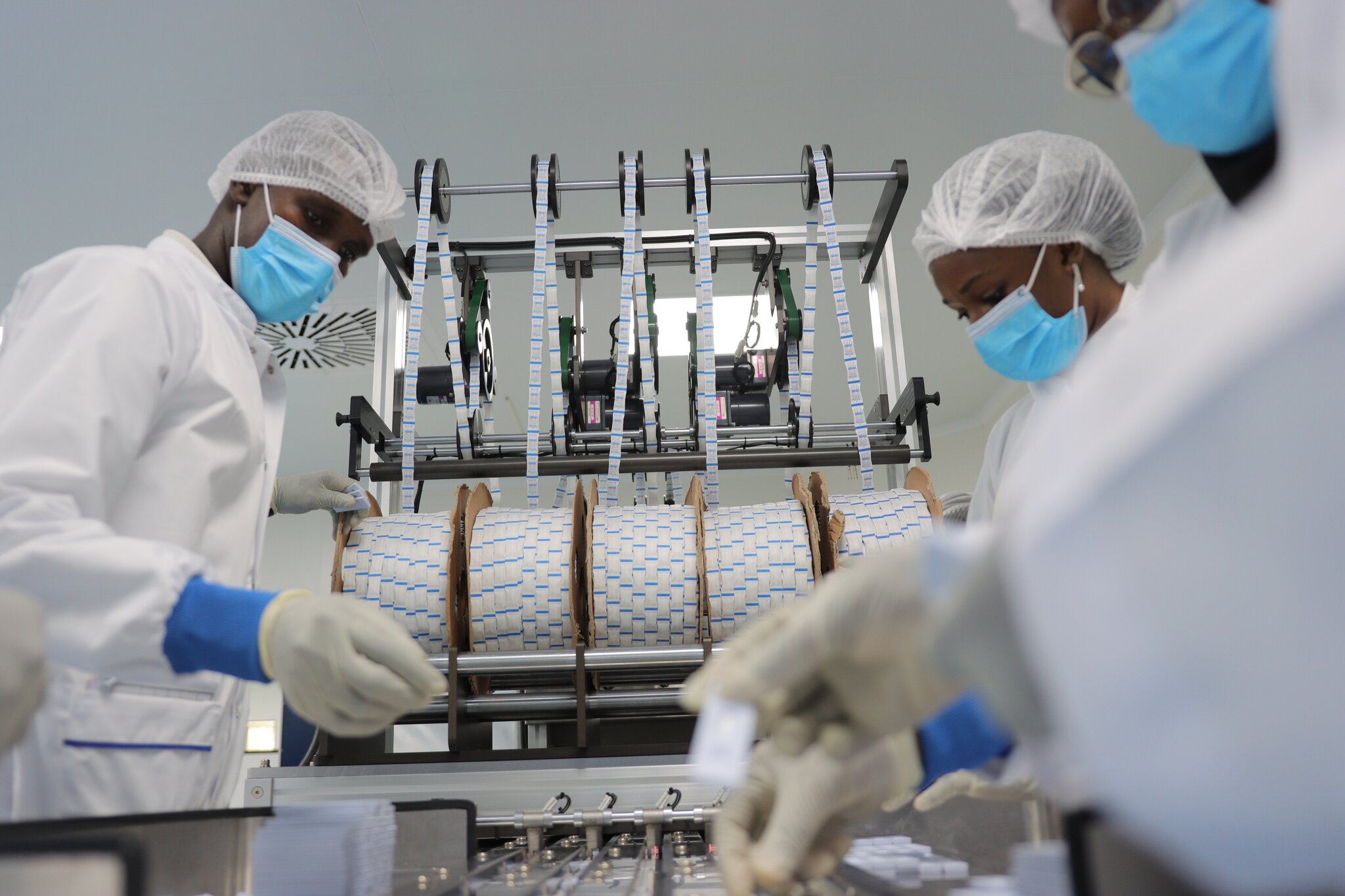Mbao, Senegal — In a modest compound outside central Dakar, a white building bearing the DIATROPIX logo marks one of West Africa’s boldest public health ventures: a diagnostics manufacturing hub that is rewiring how Africa prepares for — and responds to — major disease outbreaks.
From pandemic response to health security
Launched in 2020 by the Institut Pasteur de Dakar (IPD) with support from FIND (formerly the Foundation for Innovative New Diagnostics) and Unitaid, DIATROPIX emerged out of necessity.
At the height of the COVID-19 pandemic, African nations were locked out of the global scramble for test kits — often waiting weeks, even months, for delayed, unsuitable shipments. The gap was glaring: Africa needed fast, affordable, locally manufactured diagnostics — not only for emergencies, but to build long-term resilience.

“Too often, research ends in publications, not products,” says Dr. Cheikh Tidiane Diagne, Head of Operations at DIATROPIX. “We wanted to change the narrative — to make tools that are deployable, scalable, and accessible, even in remote health posts.”
Through the Access to COVID-19 Tools (ACT) Accelerator, Unitaid and FIND backed DIATROPIX with US$1 million in funding, while technology transfer from GADx (UK) and Bionote (Republic of Korea) enabled the transfer of critical know-how to support local manufacturing.
By 2024, the facility had ramped up from producing 2 million tests to 75 million annually — a massive leap toward regional self-reliance and what Diagne calls “social profit”: public health over market returns.

As demand for coronavirus tests declined, the team pivoted to West Africa’s long-standing health threats, manufacturing rapid tests for HIV, malaria, measles, and yellow fever — all designed for low-resource settings, requiring no electricity or laboratory. And by expanding this portfolio now, DIATROPIX is not only meeting urgent needs but strengthening the region’s preparedness for future pandemics.
“Even if demand is just 1,000 tests,” Diagne says, “if it can save lives, we’ll make it.”
And for conditions like HIV where stigma remains a chronic problem, obtaining fast, discreet results can be life changing.
Building African science, locally
The DIATROPIX model represents a new kind of health system — rooted in African science, local talent, and public purpose.
Much of its strength lies in the ‘invisible’ infrastructure: the systems and expertise behind the products. From just four staff at launch, the team now includes 44 engineers, scientists, and quality experts — most of whom trained in-country. Through initiatives like the Center for Africa’s Resilience to Epidemics (CARE) and the MADIBA training programs IPD is nurturing the next generation of biomedical leaders across the continent. Notably MADIBA stands for Manufacturing in Africa for Disease Immunization and Building Autonomy, reflecting IPD’s commitment to regional capacity building.
“Machines that didn’t exist in Senegal a few years ago are now run by local teams,” Diagne says. “We’re creating a pipeline — locally trained people, supported by global partners, building products that make sense for our health realities.”
The facility is one of Unitaid’s first major diagnostic investments in Africa but it goes beyond product development. It’s about shifting how African countries access and control health innovation.
“Unitaid and FIND provided funding to DIATROPIX for the facility, complemented by technical assistance. Our support enabled DIATROPIX to identify gaps and enhance their team’s capabilities to address them, thereby leaving a lasting legacy through the transfer of skills and knowledge.” says Jérémie Piton, Technical Officer at Unitaid. “It’s a rare example of a health intervention that goes beyond the COVID-19 crisis — and actually builds real capacity of pandemic preparedness and response.”
The sustainability challenge
Yet hurdles remain. Aligning public health needs with market demand, managing complex regulations, and navigating supply chain vulnerabilities have all been part of the journey.
“We know what’s urgently needed — malaria, TB, antimicrobial resistance — but need doesn’t always translate into market demand,” advises Diagne. “Investing in products no-one’s ready to buy is a real risk. That’s why we’ve built a commercial team and partnered with experts to better understand the market. Science alone doesn’t ensure sustainability.”
The facility is now entering what Faith Mangwanya, Unitaid’s Regional Manufacturing Program Manager, refers to as the critical phase: bridging the gap between regulatory approval and commercial viability.
“They’re running at full cost, with no revenue, while awaiting regulatory approval,” says Mangwanya. “That’s why swift procurement by governments and partners is critical — to ensure this investment translates into impact.”
That process — including manufacturing validation, dossier development, and submission — can take up to two years. Grants have sustained the facility so far, but long-term success hinges on long-term national procurement.
“If this is going to be viable,” Mangwanya warns, “Senegal needs to start buying — and then the rest of West Africa must follow. Government support is key to creating a sustainable domestic market.”
And governments won’t purchase just because the test is cheaper, she adds. “They’ll buy because they see the broader value: jobs, supply chain diversity, and health system resilience. It’s about more than the product.”
She also notes untapped demand: “The third sector — NGOs, community health programs, humanitarian responders — often needs diagnostics in volume but is rarely factored into traditional procurement strategies. Local manufacturers can help fill that gap.”
Overcoming structural disadvantages
Beyond market demand, African manufacturers face entrenched disadvantages. Many raw materials must still be imported, driving up costs and creating dependencies.
“If you only make apple juice but have to buy apples from someone who produces both the apples and the juice — they’ll always outprice you,” Mangwanya explains. “That’s the trap African manufacturers are in.”
To compete, DIATROPIX must diversify its pipeline, streamline operations, and launch high-volume products. Unitaid is working with Africa CDC, regional blocs, and development banks to aggregate demand, bolster regulatory systems, and design blended finance models that de-risk investment.
A platform for innovation
Despite these headwinds, DIATROPIX is forging ahead – not just producing tests but strengthening its portfolio and building a platform for innovation.
“There’s nothing wrong with a Senegalese institute working with partners in Europe, China, or the U.S. — science is global,” says Dr. Joe Fitchett, IPD’s Senior Advisor for Biotechnology. “But we must build local capability and control.”
DIATROPIX is already developing tests for measles, yellow fever and meningitis, with plans to tackle rubella, dengue, leishmaniasis and onchocerciasis. Many of these diseases have long been overlooked by global markets.
“It took 10–15 years to scale our yellow fever vaccine,” says Fitchett. “With COVID, it took just one. That tells us what’s possible when there’s urgency and funding.”
He adds, “Leaving an entire continent dependent on imported diagnostics is not just unsustainable, it’s dangerous. Diagnostics have the potential to deliver vaccine-like impact — catching disease early, breaking transmission chains, and ultimately saving lives.”
And crucially, by building capacity now for endemic diseases, DIATROPIX is positioned to respond quickly to future epidemics and pandemics.
“At Unitaid, we want to be catalytic,” says Mangwanya. “Solve a pain point, catalyze the solution — and ideally work ourselves out of a job.”
A regional model for the continent
DIATROPIX stands as a proof of concept: high-quality diagnostics, made in Africa, by African scientists, for Africa needs, tailored to the continent’s health priorities. It offers a replicable model for regional innovation, resilience, and self-reliance in diagnostics.
“We’re finally building the institutions Africa needs,” says Fitchett. “Not just testing products but producing them, owning the technologies, and leading the scientific agenda.”
“People think Africa is one place,” adds Diagne. “But it’s 54 distinct countries. We need the DIATROPIX model across North, East, West, and Southern Africa — grounded in partnerships, capacity building, and shared expertise.”
The initiative has helped shape strategic thinking at the African Union and Africa CDC and now serves as a reference point for future investments in local manufacturing.
“Thanks to our partners, we’re building something that values African science, African solutions, and African lives,” says Diagne. “And it’s a model we’re proud to share with the world.”
For Unitaid, the lesson is clear: regional manufacturing must be part of the global health agenda, not only as a response mechanism during pandemics, but as a cornerstone of pandemic preparedness.
“To achieve global health security, the world must expand access to African-manufactured diagnostics,” says Dr. Philippe Duneton, Executive Director of Unitaid. “DIATROPIX is stepping up to fill a critical gap—producing tests for HIV, malaria, and other region-specific diseases that have long been neglected, and breaking down barriers to timely, accurate diagnosis. They are redefining what’s possible.”
Dr Ibrahima Socé Fall, CEO, Institut Pasteur de Dakar adds, “DIATROPIX demonstrates that African science can lead — delivering world-class diagnostics manufactured in Africa, for African health priorities. But sustaining this progress requires governments and regional institutions to translate political commitments into concrete financing and procurement mechanisms. Local manufacturing is not only essential for pandemic response — it’s a driver of job creation, talent retention, and equitable access to life-saving tools, ensuring every community has access to the right tools at the right time.”